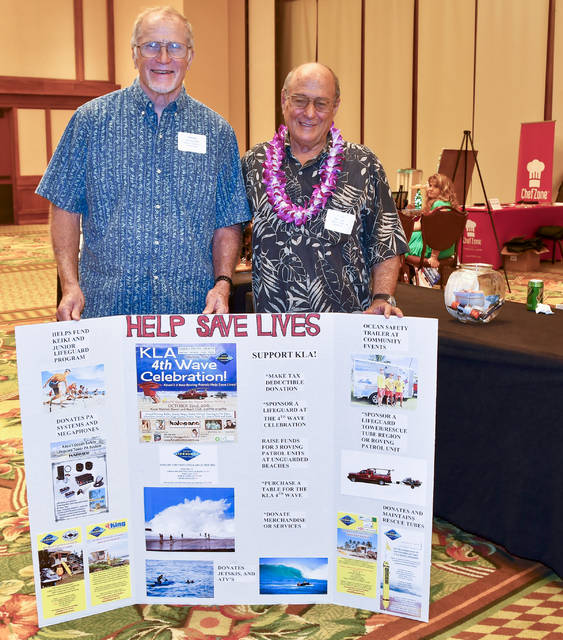We’ve all enjoyed seeing rescue tubes on our beaches and we’ve rejoiced in the lives that have been saved because of them and the Samaritans who have used them to rescue people in distress. However, we never expected to see them in the governor’s chambers!
The occasion was Friday, July 6, when Gov. David Ige signed SB 2087 into law. This new law basically grants immunity to property owners who choose to have a rescue tube stationed on their property. Placing rescue tubes hasn’t been too much of a problem here on Kauai. Ever since John Tyler first hung a rescue tube on a shrub at Larsen’s Beach in 2007, we have been able to firmly establish a program such that rescue tubes are on county beaches, state beaches, resorts’ beaches, and condos’ beaches.
There has, however, been some resistance by landowners on other islands who fear that if a rescue tube were deployed and things went awry, they might be held liable. This bill should eliminate these fears and should allow for more rescue tubes to be placed.
And yes, that will mean more lives saved, more families saved, more catastrophes averted. Just last week on Maui a party of four was saved because of two rescue tubes that were deployed by Samaritans. The swimmers were stabilized and they floated comfortably on their tubes until our trusty lifeguards roared onto the scene with their Jet Skis and tidied up the situation.
Here on Kauai we have documented 163 people over the last 10 years who were assisted because of rescue tubes being used by Samaritans. Analyzing these events in detail, it’s clear that at least two dozen out of these 163 would have died for sure. The other 140 or so might or might not have died but the rescue tubes sure came in handy.
A couple of comments about rescue tubes and rescue tube programs: There is no particular magic to rescue tubes. For over a century flotation devices with straps (i.e. rescue tubes of one form or another) have been to lifeguards what a stethoscope is to a doctor, i.e. their basic tool.
And speaking of lifeguards, they are obviously one to eight in any list of the Top 10 most important elements of an ocean safety program. The novelty of a “rescue tube program” lies in having them be readily available to beachgoers on remote and unguarded beaches, or on lifeguarded beaches after hours.
It also needs to be mentioned that local surfers and beachgoers have, for many decades, made countless rescues using surfboards and boogie boards and maybe even a piece of hau bush or a plank, anything that floats. Another important point to mention is that the No. 1 instruction written on our rescue tubes states, “If you can’t swim, do not use this device, do not go in the water.”
One final comment: Having a rescue tube program in place is one thing. Having volunteers who are the boots on the ground in terms of designing them, purchasing them, implanting the stations, and maintaining the tubes and their stations is quite another.
The names I’m about to mention will likely not mean anything to most readers of this piece, but they mean the world to me and they are the key to the lives that have been saved here on Kauai. Branch Lotspeich and John Gillen (Rescue Tube Foundation Officers); Bill Prinzing, Lisa Johnshoy and Cory Todd (SouthWest District); Mike Taboniar (East District); Kelly Ching, Eurelle Blair, Nick Moore, Dennis Bosio, Dennis Parker, and Jenna Crisler (North District); Mike and Mackey DeSilva (NaPali).
A tip of the hat to these ladies and gentlemen and to state Sen. Stanley Chang. Because of you our rescue tube program is alive and well, and so are quite a few people.
•••
Monty Downs, M.D., is president of the Kauai Lifeguard Association.


